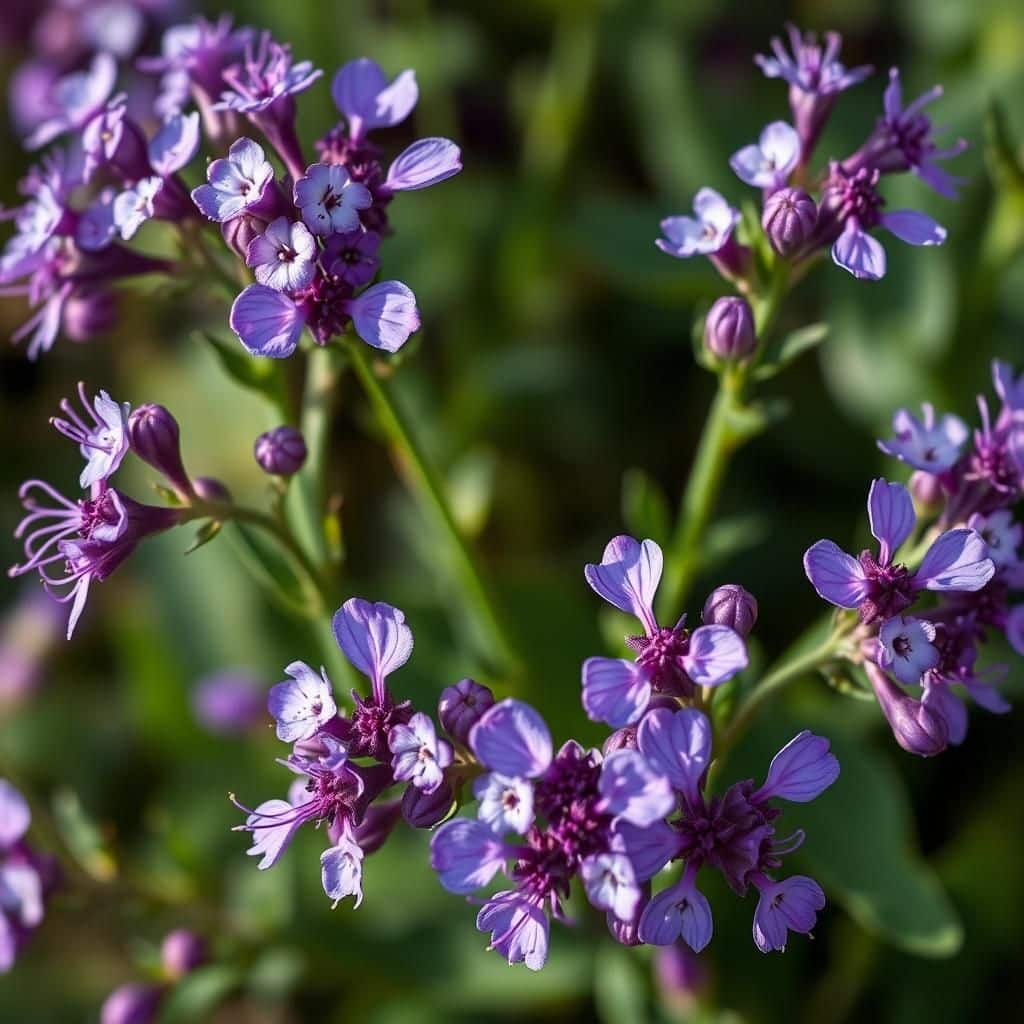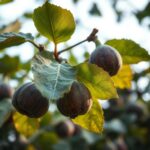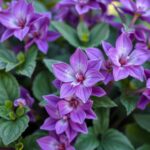Discover the Beauty of Small Purple Flowers Australia: Top Varieties and Care Tips

Australia is home to a stunning array of flora, and among its treasures are the enchanting small purple flowers that grace its landscapes. These delicate blooms not only add vibrant splashes of color but also attract pollinators and enhance biodiversity. In this article, we will explore some of the top varieties of small purple flowers found across the continent, showcasing their unique characteristics and charm. Additionally, we’ll provide essential care tips to help you cultivate these beautiful plants in your garden, ensuring they thrive and continue to flourish for years to come. Discover the beauty and joy these flowers can bring!
Exploring Small Purple Flowers Found in Australia
In Australia, the landscape is adorned with a variety of small purple flowers that contribute to the country's rich biodiversity. Among them, the native species often bloom in distinct habitats, ranging from coastal regions to inland areas. These flowers, frequently sought after by both botanists and gardening enthusiasts, are not only a visual treat but also play an essential role in supporting local pollinators. Their vibrant hues can be seen in gardens and wild settings alike; some notable examples include Dicksonia, Hardenbergia, and Viola, each boasting unique characteristics that make them special contributors to Australia's floral tapestry.
1. Common Types of Small Purple Flowers in Australia
Australia hosts a variety of small purple flowers, amongst which Hardenbergia violacea, commonly known as the native wisteria, is prominent. This perennial vine features small clusters of purple blooms that stand out in gardens and natural environments. Another popular flower is the viola hederacea, or ivy-leaf violet, which showcases enchanting purple petals and thrives in moist, shaded areas. The relatively rare Patersonia species also contributes to the purple floral scene, featuring stunning blooms that enhance Australia’s diverse botanical tapestry.
2. Habitats Supporting Small Purple Flowers
Small purple flowers in Australia thrive in diverse habitats ranging from coastal dunes to woodland areas. The Mediterranean climate of certain regions provides an ideal environment for these blooms, particularly during spring when rainfall supports their growth. In more arid interiors, some species have adapted to survive with limited water, exemplifying the resilience of these plants. Wetlands and grasslands also serve as essential habitats, providing necessary nutrients and humidity for optimal growth.
3. Importance of Small Purple Flowers to Ecosystems
Small purple flowers are crucial for maintaining healthy ecosystems in Australia. They provide important nectar sources for various pollinators, including bees, birds, and butterflies, which are essential for plant reproduction. Additionally, these flowers contribute to soil stability and prevent erosion, particularly in fragile ecosystems. By supporting local wildlife, they help sustain biodiversity and enhance the ecological balance within their respective environments.
See also:
4. Cultivation and Gardening Tips
For gardeners interested in cultivating small purple flowers, choosing native species is pivotal for ensuring climatic compatibility and ecological preservation. It is advisable to plant these flowers in well-drained soil, supplemented with organic matter to retain moisture. Consideration should also be given to the sunlight requirements of each species, as many purple flowers prefer full sun or partial shade. Regular watering during dry spells will promote growth, while pruning can help maintain their shape and encourage more blooms.
5. Conservation Efforts for Native Purple Flowers
Conservation efforts in Australia aim to protect small purple flowers from habitat loss and climate change impacts. Programs focusing on restoration of native flora ensure that these important species continue to thrive. Organizations are working to raise awareness about the importance of biodiversity and encourage the planting of native species in public and private gardens. Furthermore, educational campaigns seek to engage communities in the preservation of these unique flowers, highlighting their role in sustaining local ecosystems.
| Flower Name | Common Habitat | Pollinator Type |
|---|---|---|
| Hardenbergia violacea | Coastal areas, Woodlands | Bees, Butterflies |
| Viola hederacea | Shaded Wetlands | Bees, Moths |
| Patersonia spp. | Grasslands, Open Forests | Birds, Bees |
Exploring the Unique Characteristics of Australia's Small Purple Flowers
Australia is home to an extraordinary array of small purple flowers, each exhibiting unique characteristics and charm. Among these varieties, the Wisteria, with its delicate cascading blooms, brings a touch of elegance to any garden. The Native Bluebell is another stunning example, favored for its vibrant color and adaptability in various environments. Care tips for maintaining these flowers include ensuring they receive adequate sunlight, proper watering techniques, and regular pruning to promote healthy growth. Understanding the specific needs of each variety allows gardeners to appreciate the stunning aesthetic these small purple flowers contribute to the landscape.
Top Small Purple Flower Varieties in Australia
Australia boasts numerous small purple flower varieties that captivate gardeners and plant enthusiasts alike. Among the most popular is the Hardenbergia violacea, or the native "Purple Coral Pea," known for its rich purple blooms and vine-like growth. The Australian Violet (Viola hederacea) is also a favorite, treasured for its compact size and charming flowers, which bloom throughout the year. Another notable variety is the Creeping Thyme, which produces lovely purple flowers while serving as a fragrant ground cover. Understanding these varieties enriches one's gardening experience and highlights the diversity present in Australia's flora.
Caring for Small Purple Flowers
Caring for small purple flowers requires a basic understanding of their individual needs. Most of these plants thrive in well-drained soil and prefer a sunny location, though some may tolerate partial shade. It is essential to monitor watering habits; overwatering can lead to root rot, while underwatering may cause wilting and stress. Regular fertilization, especially during the growing season, can enhance their blooming potential, yielding a more vibrant display. Gardener dedication to these care tips fosters a thriving garden filled with stunning purple hues.
See also:
Best Planting Techniques for Purple Flowers
To successfully plant purple flowers, it's crucial to choose the right timing and location. Early spring or late fall usually provides optimal conditions for planting, as the soil is warmer and supports root development. Preparing the garden bed by loosening the soil and amending it with organic matter enhances drainage and nutrient availability. When planting, spacing is essential; sufficient distance between plants allows for air circulation and reduces the risk of disease. Following these planting techniques can significantly increase the chances of a flourishing display of purple flowers.
Attracting Pollinators with Purple Flowers
Small purple flowers not only beautify gardens but also serve as a critical resource for pollinators such as bees and butterflies. These flowers often produce nectar and pollen, which are essential for the nourishment of these beneficial insects. Planting a variety of purple flowers can create a diverse habitat that attracts a wider range of pollinators, ultimately promoting biodiversity in your garden. Positioning these flowers in groups enhances visibility and accessibility for pollinators, contributing to a vibrant and thriving ecosystem.
Design Ideas Using Small Purple Flowers
Incorporating small purple flowers into landscape design can transform garden spaces into visually appealing environments. These flowers work beautifully in border plantings, where they can create striking contrasts with other colors, or in container gardens, providing beauty even in limited spaces. Pairing purple blooms with complementary colors, like yellows or whites, can add depth and interest. Using a mix of textures and heights, such as incorporating taller purple varieties with smaller ground covers, enhances the overall design. Creative arrangements utilizing small purple flowers can reflect your personal style while highlighting the natural beauty of Australia's flora.
Questions from Our Readers
What are some common small purple flowers found in Australia?
Some common small purple flowers found in Australia include Dampiera, Hardenbergia, and Violet Bellflower. These species are known for their vibrant purple hues and ability to thrive in various Australian climates, making them popular choices for gardens and landscaping.
When do small purple flowers typically bloom in Australia?
Small purple flowers in Australia generally bloom during the spring and summer months, offering bursts of color in gardens from September to February. However, the exact blooming period can vary depending on the species and regional climate conditions.
See also:
Where can I find small purple flowers in Australia?
You can find small purple flowers in various habitats across Australia, including coastal areas, woodlands, and even urban gardens. Many of these flowers are often found in national parks or reserves, where they grow in their natural environment.
Are small purple flowers native to Australia?
Yes, many small purple flowers are native to Australia, adapted to the unique climatic conditions and soils of the region. Species like Dampiera and Hardenbergia are examples of native plants that contribute to Australia’s rich biodiversity.

If you want to read more articles like Discover the Beauty of Small Purple Flowers Australia: Top Varieties and Care Tips, we recommend you check out our Landscaping category.
Leave a Reply
Related Articles